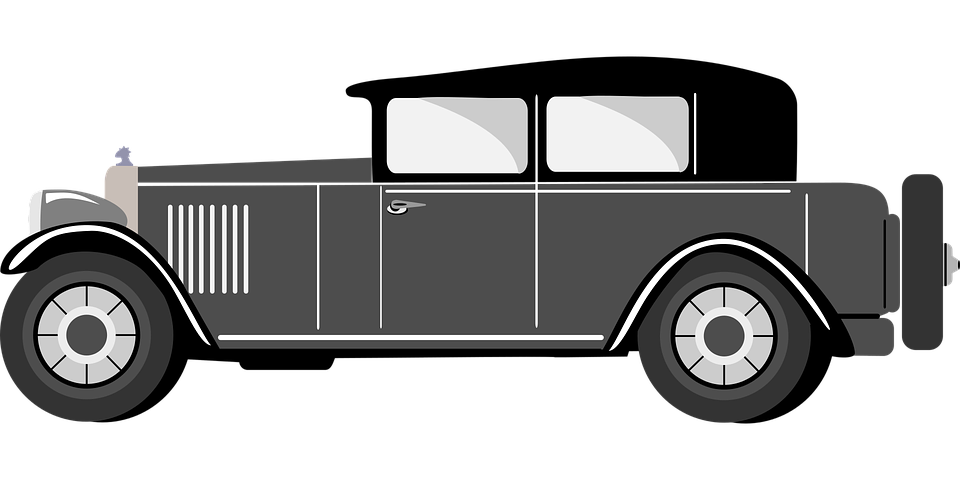


Mobile users:
For best results, view in Landscape mode.
History of the
Brake System:
The earliest brake system invented was the wooden
block brake, which was used on horse drawn
carriages.
This type of brake consisted of a long handle attached to a block
of wood.
The handle was used as a lever near the driver's seat.
When the driver wanted to stop the carriage, they would rein in
the horses and pull up on the lever.
This action would push the wooden block against the wheels
causing friction, causing the wheels to
slow down and stop.
The first horseless carriages (cars)
also used the same brake system.
Drum Brakes:
In 1902, Louis Renault of France invented the drum
brake system which later became standard on cars.
The brake blocks (known as shoes today) were moved
closer to the axle and housed inside a metal liner (drum),
creating the 'drum' brake.
In drum brakes, the brake shoes generate friction by rubbing
against the inner surface of a brake drum attached to a
wheel.
It was first created as a way to make the wooden block
easier to move.
This consisted of a cable wrapped around a metal drum.
As the carriage moved, the cable tightened, making it
easier to pull the lever and stop the carriage.
Also in 1902 in the U.S., Ransom E. Olds of Oldsmobile
tested a brake design by wrapping a flexible stainless
steel band around the rear axle drum.
The driver pressed the foot pedal mounted on the floor
to operate the brake band which gripped the drum.
Drum brakes are still used on the
rear axle of many of today's cars.
Disc Brakes:
In 1898, Elmer Ambrose Sperry from Cleveland, Ohio,
designed an electric car with front-wheel disc
brakes, built by the Cleveland Machine Screw Co.
A disc brake (or rotor) is a wheel brake that slows
rotation of the wheel by the friction caused by
pushing brake pads against a brake disc with a set of
calipers.
Compared to drum brakes, disc brakes offer better
stopping performance because the
disc is more readily cooled.
Today, brake discs are commonly made of grey iron
(a form of cast iron).
Chrysler developed a braking system, offered from 1949 to 1953.
Instead of the disc with caliper squeezing on it, this system
used twin expanding discs that rubbed against the inner
surface of a cast-iron brake drum, which doubled as the brake
housing.
The discs spread apart to create friction against the inner drum
surface through the action of standard wheel cylinders.
Because of the expense, the brakes were only standard on
the Chrysler Crown and the Town and Country
Newport in 1950.
In the 1960's through the 1980's, disc brakes gradually replaced
drum brakes on the front wheels of cars.
In 1965, front disc brakes became standard equipment on
the Rambler Marlin, also on the Ford Thunderbird,
and the Lincoln Continental.
Also in 1965, a four-wheel disc
brake system was introduced on
the Chevrolet Corvette Stingray.
Hydraulic Brakes:
Hydraulic brakes use a master cylinder in a hydraulic system
to keep pressure evenly applied to each wheel of the car as
the driver presses on the brake pedal.
In 1918, Malcolm Loughead from California, (who changed
the spelling of his name to Lockheed in 1926)
invented and patented the first hydraulic brakes.
Loughead proposed a concept of a four wheel brake system
using hydraulics.
Using cylinders and tubes, Loughead used fluids to transfer
force to the brake shoe when a pedal was pressed.
Loughead was a member of the Lockheed family, a company
known better for producing airplanes (Alco Hydro-Aeroplane
Company then later changed to the Lockheed Corporation).
In 1921, the first car in the U.S. with four wheel hydraulic brakes
was the Duesenberg, manufactured in Indianapolis, Indiana.
Frederick Duesenberg was a German born American
automobile and engine designer, and manufacturer who was
a designer of racecars and racing engines.
In 1913 the Duesenberg brothers founded the Duesenberg
Motor Company, Incorporated, which was subsequently sold,
and in 1920 were among the founders of the Duesenberg
Automobile and Motor Company, which manufactured
passenger cars in Indianapolis,
Indiana, from 1921 - 1937.
In 1923, Chrysler made four wheel hydraulic brakes that were
based on the Lockheed principle but completely redesigned.
In 1929, four wheel hydraulic braking systems were standard
equipment on most higher priced cars.
And soon after, it became common on lower price cars.
By 1931, Chrysler, Plymouth, Desoto, Dodge, and many other
car manufacturers were using hydraulic brakes.
In 1935, Nash introduced hydraulic brakes on their cars.
ABS Brakes:
The anti-lock brake system (ABS), was created to prevent
the brakes from locking up while in use.
Anti-lock brakes allow the tires to maintain traction on the
road surface while braking.
The anti-lock brake system, now known as ABS, was originally
invented for airplanes in 1929 by French engineer Gabriel
Voisin.
ABS remained mainly an aircraft technology until the 1950's,
when it was applied to motorcycles.
In the early 1950's, the Dunlop Maxaret was the first anti-lock
braking system (ABS) to be widely used for aviation use
in the UK.
The first fully electronic anti lock system was developed in the
late 1960's for the Concorde aircraft.
In 1970, Ford added an anti-lock braking system called
"Sure-track" to the rear wheels of Lincoln Continentals
as an option; it became standard in 1971.
Also in 1971, General Motors introduced the "Trackmaster"
rear-wheel only ABS as an option on their rear wheel drive
Cadillac models and the Oldsmobile Toronado.
Chrysler introduced a computerized, 3-channel, four sensor
all-wheel ABS called "Sure Brake" for its 1971 Imperial.
It was available for several years thereafter and proved
reliable.
In 1987, the ABS system was standard equipment on all
Mercedes Benz automobiles.
In 1993, Lincoln became one of the first car companies to
provide standard four-wheel anti-lock brakes along with dual
air bags on all of their vehicles.
In 2005, Harley-Davidson began offering an ABS option
on police bikes.
The ABS system is on all new cars in the U.S. since
it became Federal law back in September, 2000.
